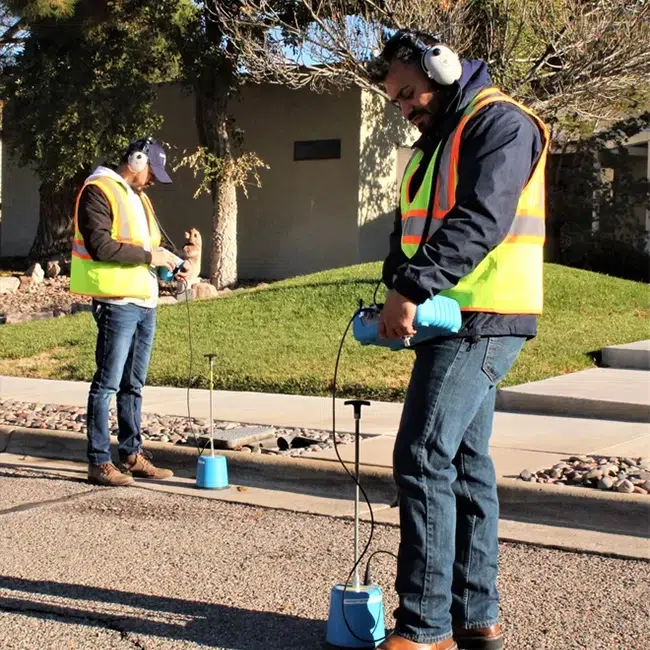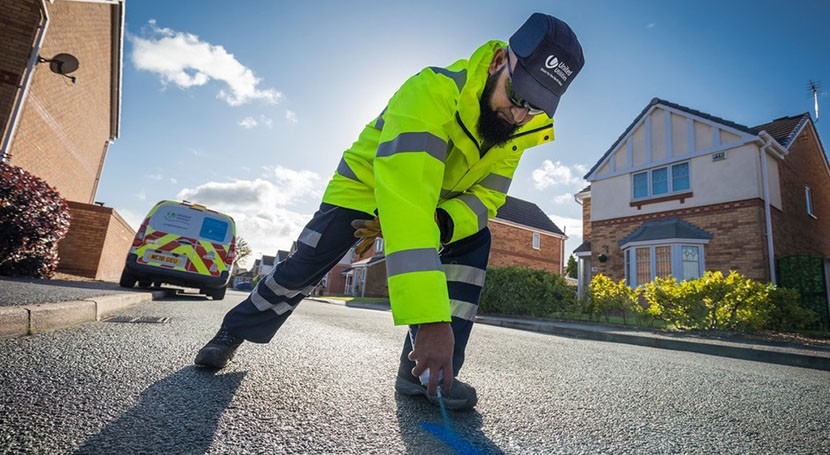Innovative Solutions for Very Early Detection of Water Leaks in Structures and Facilities
As the integrity of structures and facilities is paramount, the obstacle of early detection of water leakages has stimulated ingenious solutions that assure to reinvent the means we guard against potential problems. From advanced leakage discovery technologies to the release of IoT sensing units for real-time monitoring, the landscape of leakage prevention is progressing rapidly. Maker knowing formulas supply a look into the future of leakage prediction, while thermal imaging offers a non-intrusive technique for determining covert leakages. Automated water circulation analysis systems are reshaping how leaks are recognized and dealt with, leading the way for an aggressive approach to water leak discovery. Each of these solutions holds the crucial to guaranteeing the integrity and longevity of our constructed setting, triggering a shift towards a more lasting and reliable future.
Advanced Leakage Discovery Technologies
Advanced leakage detection innovations, furnished with innovative sensing units and algorithms, play a critical duty in promptly recognizing and identifying water leaks in different settings. These technologies use a mix of acoustic, thermal, and electro-magnetic picking up techniques to find leakages precisely. Acoustic sensors discover the sound of leaving water, permitting exact localization of the leak source. Thermal imaging spots temperature changes caused by water leak, giving an additional reliable approach for leakage identification. Electro-magnetic sensing units can determine modifications in electromagnetic areas triggered by water, using yet one more layer of leakage detection ability.

IoT Sensors for Real-Time Tracking
In the world of modern water leak discovery, the assimilation of IoT sensors for real-time monitoring represents a crucial advancement in improving aggressive leak detection abilities. These sensing units offer continual monitoring of water supply, providing real-time data on water circulation rates, stress variations, and temperature modifications. By leveraging IoT modern technology, these sensors can find even the tiniest anomalies in water usage patterns, enabling very early recognition of possible leakages prior to they rise into major problems.
IoT sensing units transmit information to a centralized platform, where advanced algorithms evaluate the information and produce notifies or notices when irregularities are found. This real-time surveillance capability allows homeowner or center supervisors to without delay resolve leakages, lessening water damages, minimizing repair service expenses, and saving water resources.
Furthermore, IoT sensors can be integrated with structure monitoring systems, permitting for computerized actions to found leaks, such as shutting off water shutoffs or triggering pumps to reduce the impact of leaks. Generally, the application of IoT sensing units for real-time tracking considerably improves the performance and effectiveness of water leak discovery in structures and infrastructure.
Equipment Learning Algorithms for Leakage Prediction

One trick benefit of utilizing machine understanding for leakage prediction is its ability to continually discover and improve its precision gradually. As more data is accumulated and fed right into the algorithm, it can improve its forecasts and adapt to changing problems, eventually increasing the integrity of leakage detection systems.
Furthermore, artificial intelligence formulas can help in identifying refined signs of leakages that might go unnoticed by conventional monitoring approaches. water leak detection. By examining intricate data embed in real-time, these formulas can provide very you can find out more early cautions and informs, permitting punctual intervention and preventative upkeep to mitigate possible water damage and linked expenses
Utilizing Thermal Imaging for Leakage Detection
Thermal imaging technology supplies a promising technique for detecting water leaks in different systems and infrastructures. By using infrared radiation and temperature variations, thermal imaging cameras can recognize covert leaks that are not quickly noticeable to the naked eye.
One of the essential advantages of thermal imaging for leak detection is its non-intrusive nature. Unlike traditional methods that may require getting into wall surfaces or floorings to find leaks, thermal imaging allows for non-destructive testing. This not just conserves time and lowers prices however likewise reduces disruption to the structure or facilities being evaluated. Additionally, thermal imaging can quickly check big areas, offering an extensive overview of possible leakage sources in a prompt fashion. Generally, making use of thermal imaging technology boosts the performance and accuracy of water leak discovery, making it a beneficial official source tool for maintaining the honesty of buildings and infrastructures.
Automated Water Flow Evaluation Solutions
How can computerized water flow evaluation systems reinvent the discovery and administration of leaks in numerous systems and infrastructures? Automated water circulation analysis systems use a proactive strategy to leak discovery by continuously monitoring water flow prices and patterns. By establishing standard data, these systems can swiftly identify variances that might suggest a leakage, enabling punctual intervention to avoid substantial damages.
These systems utilize sophisticated algorithms to evaluate real-time information and provide instant signals when anomalies are identified, enabling for speedy action to be taken. Furthermore, computerized water flow evaluation systems can be incorporated with structure management systems or IoT platforms, improving overall effectiveness and making it possible for remote monitoring capabilities.
Furthermore, the see here now information collected by these systems can be used for predictive maintenance purposes, helping to identify potential powerlessness in the facilities prior to leakages happen. Generally, the execution of automatic water flow analysis systems can substantially boost leakage discovery and administration techniques, ultimately causing cost financial savings, reduced water waste, and raised sustainability in structures and infrastructure.

Final Thought
In verdict, the integration of sophisticated leak detection innovations, IoT sensors, artificial intelligence formulas, thermal imaging, and automatic water circulation evaluation systems uses cutting-edge remedies for very early discovery of water leakages in structures and infrastructure. These modern technologies make it possible for real-time surveillance, forecast of leakages, and reliable discovery techniques to stop water damage and waste. Executing these services can help in maintaining the integrity and sustainability of water supply in numerous setups.